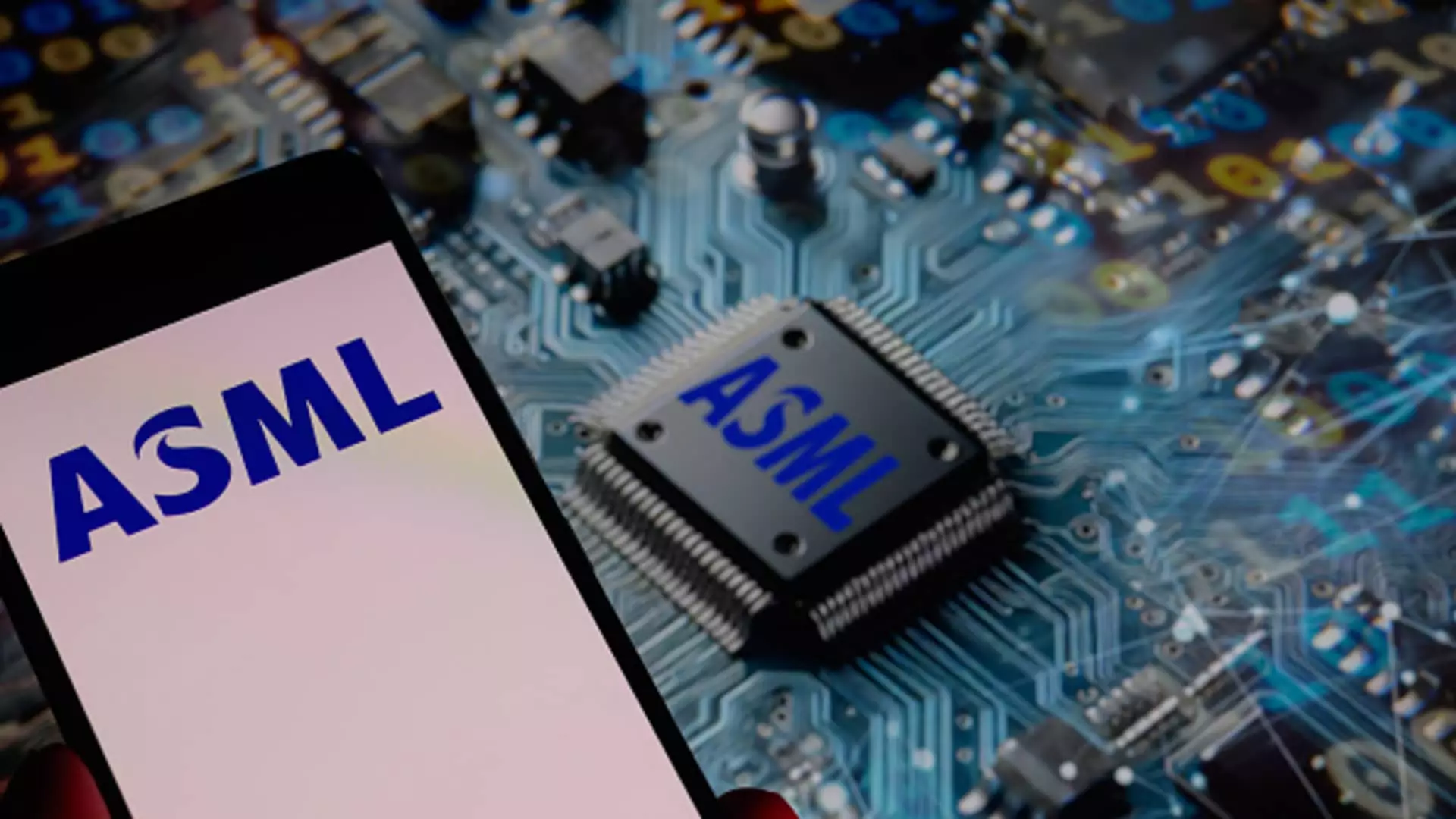Despite outright beating earnings estimates in the second quarter, ASML’s recent statements cast a long shadow of doubt over its long-term prospects. The company reported better-than-expected revenues and net income, revealing that its core business—producing the extreme ultraviolet (EUV) lithography machines that power the world’s most advanced chips—remains resilient, at least temporarily. However, a closer look exposes the fragility of this apparent success. The company’s cautious forecasts for the upcoming quarter and ominous warnings about 2026 reveal a deeper uncertainty that cannot be dismissed. The optimism seems superficial at best, masking underlying vulnerabilities that could threaten future growth.
ASML’s revenue guidance for 2025 has been effectively cut in half—from an optimistic outlook of 30–35 billion euros to a more conservative 32.5 billion. Perhaps more revealing is the company’s hesitance in forecasting beyond 2025, with CEO Christophe Fouquet explicitly stating that macroeconomic and geopolitical factors introduce enough uncertainty to hinder confident predictions for 2026. This tacit admissions point to a broader industry crisis of confidence, driven by unpredictable U.S. tariffs and increasing geopolitical tensions that threaten to destabilize the entire supply chain.
The company’s deviation from its previous guidance on the current quarter, and its lowered outlook for 2025, reveal the fragility of recent success. It beats estimates not because of surging demand but due to existing upgrade revenues and perhaps temporary easing of tariffs—factors that are unlikely to sustain their current levels in the long run. ASML’s narrative of “strong fundamentals” within AI-driven customer demand is, at best, optimistic speculation rather than certainty. In reality, the entire semiconductor ecosystem is shadowed by the threat of protectionist policies and economic headwinds, which limit the potential for genuine, sustainable growth.
Growth or Illusion of Growth?
ASML’s reported net bookings of 5.5 billion euros, significantly above expectations, suggest a robust order pipeline. Yet, this metric is not a crystal ball. Orders can be delayed, canceled, or reprioritized amid the geopolitical chaos and economic slowdown looming on the horizon. The company’s flagship product—High NA EUV machines, large and expensive—are vital to future chip manufacturing, but their purchase is heavily dependent on the capital expenditure of strategic clients like Apple, Nvidia, and TSMC, all of which are grappling with their own uncertainties.
While demand for AI chips fuels optimism, it’s misguided to view this as a guaranteed growth engine. Advanced chip manufacturing still depends on political stability, international cooperation, and predictable trade policies—all of which are rapidly eroding. The fact that ASML shipped only a single High NA machine in the quarter highlights the limited scale of immediate growth opportunities, emphasizing that the massive investments in these complex tools are inherently slow and contingent on external factors beyond the company’s control.
Moreover, ASML’s reliance on a handful of mega-customers makes it overly vulnerable. Any disruption within these ecosystems, whether from geopolitical conflicts, export restrictions, or economic downturns, could drastically impact its order flow. In a high-stakes industry, where multi-hundred-million-dollar machinery is standard, even a slight hesitation from a major client could have outsized consequences. The company’s evident confidence risks bordering on wishful thinking, masking the reality that a fragile global economic environment may quickly undermine the very foundation of its growth prospects.
Challenging the Narrative of U.S. Tariffs and Geopolitical Headwinds
Much of ASML’s recent struggles can be traced to the unpredictable landscape shaped by U.S.-China tensions, tariffs, and export restrictions. These policies have created a vexing atmosphere for semiconductor firms, particularly for advanced equipment like EUV lithography machines. The restrictions have not only limited sales to certain core markets but have also curtailed the expansion of next-generation manufacturing capacities in China, which is a key growth region for the industry.
ASML’s data points to an uneasy reality: even as it benefits temporarily from a surge in AI demand, the broader environment is leaning toward instability. With policymakers increasingly wielding trade tools to shape the global tech landscape, the company’s near-term prospects are hostage to diplomatic relations rather than market fundamentals. This geopolitical pressure introduces a systemic risk that no technological innovation or profit margin enhancement can fully mitigate.
In essence, ASML operates at the mercy of political decisions that fluctuate unpredictably, and this creates a scenario where growth projections are nothing more than fragile constructs, liable to collapse under fresh policy shifts. The company’s cautious tone for 2026—highlighting “increasing uncertainty”—should be seen as a warning sign, not a disclaimer. It signals that the industry’s current prosperity may be nothing more than a transient reflection of temporary demand spikes or easing tariffs, rather than a sustainable trajectory.
While ASML’s technological leadership remains unchallenged, the environment it operates within has become an arena ruled by geopolitical chess, where fortunes can shift overnight. Relying on AI-driven growth as a beacon of hope masks the broader vulnerabilities lurking beneath the surface.


Leave a Reply